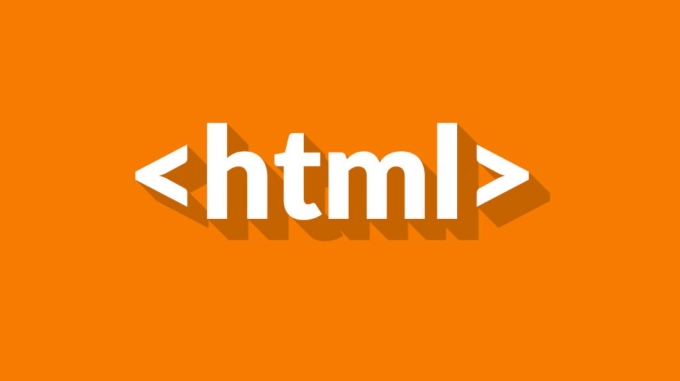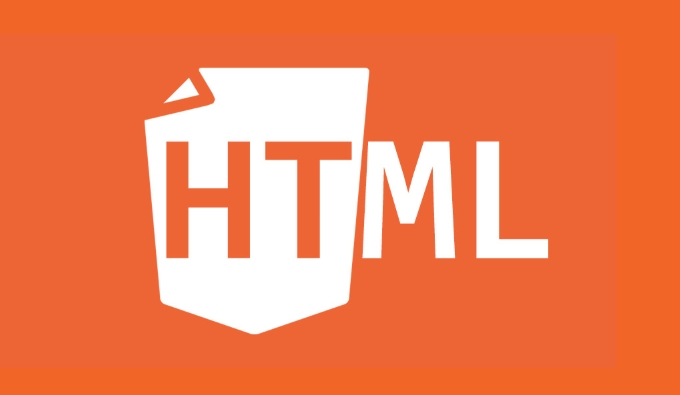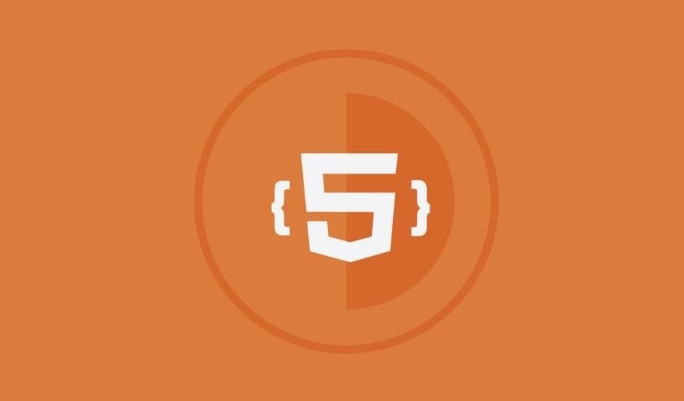How to play a sound on a button click using HTML and JavaScript?
Jul 13, 2025 am 02:25 AMTo make the sound play when the button is clicked, you need to bind the click event and trigger the audio playback. First prepare the audio file such as click-sound.mp3 and make sure the path is correct; then create buttons and hidden

To make a button play sound when clicked, it is not difficult to implement it in HTML and JavaScript. The core idea is: bind a click event to the button, and then trigger audio playback in this event.

Prepare your audio files
First of all, you have to have an audio file, common formats such as .mp3 or .wav are fine. You can prepare a piece of sound effects or background music yourself and put it in the project directory, such as click-sound.mp3 .

Make sure that the path to this file is correct and there will be no errors when referenced in the code.
Write HTML buttons and audio tags
Audio resources can be introduced in HTML through the <audio></audio> tag and playback is triggered through buttons. You can also not display the audio control on the page, just let it play in the background. For example:

<audio id="clickSound" src="click-sound.mp3"></audio> <button id="playButton">Click to play the sound</button>
The advantage of writing this way is that the structure is clear and convenient for subsequent control with JavaScript.
Binding click events with JavaScript
Next is the key part: click with the JS monitor button and then play the audio. You can write this way:
document.getElementById('playButton').addEventListener('click', function() {
var audio = document.getElementById('clickSound');
audio.play();
}); This code means that when the button is clicked, the corresponding audio element is found and .play() method is called.
Pay attention to a few small details:
- In order to prevent automatic sound playback, some browsers will block playback behavior without user interaction by default. Therefore, this method requires users to actively click to play.
- If you want the sound to play repeatedly, you can add
audio.currentTime = 0;before the playback to reset the playback progress to the beginning. - If you need multiple buttons to play different sounds, you can associate each button with the corresponding audio ID.
Too low sound? No response? Frequently Asked Questions
Sometimes you will find that the sound playback is fine, but the experience is not very good. There may be several reasons:
- Mute or volume too low : Check whether the system volume and browser tags are muted.
- Cross-domain issue : If your audio comes from another website, it may not be loaded due to cross-domain restrictions. It is recommended to place the audio file on your own server.
- Poor mobile compatibility : Some mobile browsers require that the first playback must be triggered by user gestures (such as click), otherwise playback is not allowed. This is why your playback logic is executed within the click event.
Basically that's it. It is not complicated to implement, but pay attention to the browser's behavioral limitations and user experience details.
The above is the detailed content of How to play a sound on a button click using HTML and JavaScript?. For more information, please follow other related articles on the PHP Chinese website!

Hot AI Tools

Undress AI Tool
Undress images for free

Undresser.AI Undress
AI-powered app for creating realistic nude photos

AI Clothes Remover
Online AI tool for removing clothes from photos.

Clothoff.io
AI clothes remover

Video Face Swap
Swap faces in any video effortlessly with our completely free AI face swap tool!

Hot Article

Hot Tools

Notepad++7.3.1
Easy-to-use and free code editor

SublimeText3 Chinese version
Chinese version, very easy to use

Zend Studio 13.0.1
Powerful PHP integrated development environment

Dreamweaver CS6
Visual web development tools

SublimeText3 Mac version
God-level code editing software (SublimeText3)

Hot Topics
 Explain the purpose of the role attribute in ARIA.
Jun 14, 2025 am 12:35 AM
Explain the purpose of the role attribute in ARIA.
Jun 14, 2025 am 12:35 AM
ARIA's role attribute is used to define the role of web elements and improve accessibility. 1. Role attribute helps assistive technology to understand the functions of elements, such as buttons, navigation, etc. 2. Use role attributes to assign specific roles to non-semantic HTML elements. 3. The role attribute should be consistent with the element behavior and be verified by the accessibility tool test.
 HTML and Design: Creating the Visual Layout of Websites
Jun 14, 2025 am 12:39 AM
HTML and Design: Creating the Visual Layout of Websites
Jun 14, 2025 am 12:39 AM
How to create a website layout? 1. Use HTML tags to define the content structure, such as, ,. 2. Control styles and positions through CSS, using box model, float or Flexbox layout. 3. Optimize performance, reduce HTTP requests, use cache and optimize images, and ensure responsive design.
 How do I stay up-to-date with the latest HTML standards and best practices?
Jun 20, 2025 am 08:33 AM
How do I stay up-to-date with the latest HTML standards and best practices?
Jun 20, 2025 am 08:33 AM
The key to keep up with HTML standards and best practices is to do it intentionally rather than follow it blindly. First, follow the summary or update logs of official sources such as WHATWG and W3C, understand new tags (such as) and attributes, and use them as references to solve difficult problems; second, subscribe to trusted web development newsletters and blogs, spend 10-15 minutes a week to browse updates, focus on actual use cases rather than just collecting articles; second, use developer tools and linters such as HTMLHint to optimize the code structure through instant feedback; finally, interact with the developer community, share experiences and learn other people's practical skills, so as to continuously improve HTML skills.
 How do I use the element to represent the main content of a document?
Jun 19, 2025 pm 11:09 PM
How do I use the element to represent the main content of a document?
Jun 19, 2025 pm 11:09 PM
The reason for using tags is to improve the semantic structure and accessibility of web pages, make it easier for screen readers and search engines to understand page content, and allow users to quickly jump to core content. Here are the key points: 1. Each page should contain only one element; 2. It should not include content that is repeated across pages (such as sidebars or footers); 3. It can be used in conjunction with ARIA properties to enhance accessibility. Usually located after and before, it is used to wrap unique page content, such as articles, forms or product details, and should be avoided in, or in; to improve accessibility, aria-labeledby or aria-label can be used to clearly identify parts.
 How do I create a basic HTML document?
Jun 19, 2025 pm 11:01 PM
How do I create a basic HTML document?
Jun 19, 2025 pm 11:01 PM
To create a basic HTML document, you first need to understand its basic structure and write code in a standard format. 1. Use the declaration document type at the beginning; 2. Use the tag to wrap the entire content; 3. Include and two main parts in it, which are used to store metadata such as titles, style sheet links, etc., and include user-visible content such as titles, paragraphs, pictures and links; 4. Save the file in .html format and open the viewing effect in the browser; 5. Then you can gradually add more elements to enrich the page content. Follow these steps to quickly build a basic web page.
 How do I create checkboxes in HTML using the element?
Jun 19, 2025 pm 11:41 PM
How do I create checkboxes in HTML using the element?
Jun 19, 2025 pm 11:41 PM
To create an HTML checkbox, use the type attribute to set the element of the checkbox. 1. The basic structure includes id, name and label tags to ensure that clicking text can switch options; 2. Multiple related check boxes should use the same name but different values, and wrap them with fieldset to improve accessibility; 3. Hide native controls when customizing styles and use CSS to design alternative elements while maintaining the complete functions; 4. Ensure availability, pair labels, support keyboard navigation, and avoid relying on only visual prompts. The above steps can help developers correctly implement checkbox components that have both functional and aesthetics.
 What is an HTML tag?
Jun 13, 2025 am 12:36 AM
What is an HTML tag?
Jun 13, 2025 am 12:36 AM
HTMLtagsareessentialforstructuringwebpages.Theydefinecontentandlayoutusinganglebrackets,ofteninpairslikeand,withsomebeingself-closinglike.HTMLtagsarecrucialforcreatingstructured,accessible,andSEO-friendlywebpages.
 How do I minimize the size of HTML files?
Jun 24, 2025 am 12:53 AM
How do I minimize the size of HTML files?
Jun 24, 2025 am 12:53 AM
To reduce the size of HTML files, you need to clean up redundant code, compress content, and optimize structure. 1. Delete unused tags, comments and extra blanks to reduce volume; 2. Move inline CSS and JavaScript to external files and merge multiple scripts or style blocks; 3. Simplify label syntax without affecting parsing, such as omitting optional closed tags or using short attributes; 4. After cleaning, enable server-side compression technologies such as Gzip or Brotli to further reduce the transmission volume. These steps can significantly improve page loading performance without sacrificing functionality.






